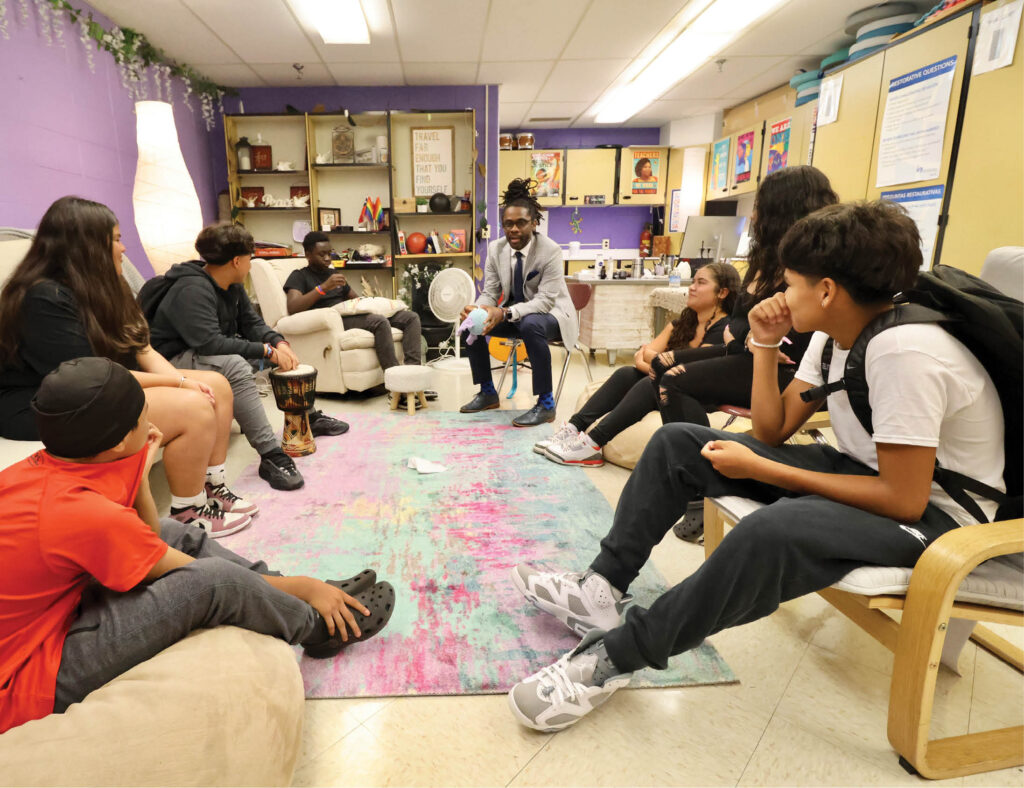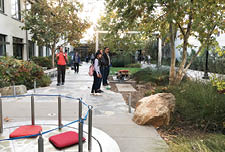Feature Facts: November 2023

Rebuilding a Sense of Community
In response to a high rate of student discipline referrals when he became principal of Argyle Middle School in Silver Spring, MD, James Allrich turned to restorative justice as a solution. Referrals dropped by over half during the first year but, more importantly, Allrich says, school became a place students wanted to return to following a discipline issue because the approach helped rebuild the school community. Allrich outlines some lessons learned for those considering restorative justice:
- Having a restorative justice coordinator is very helpful.
- It must be part of the entire school program and not an add-on, and that includes school leaders modeling the approach in their own practices.
- Restorative justice is about more than alternatives to suspensions and discipline referrals; it’s about changing the school climate and culture.

Physical Environments Can Nurture and Inspire
The pandemic inspired many elementary schools to create green schoolyards, which can have powerful social, emotional, and health benefits, says Claire Latané, an associate professor at Cal Poly Pomona. Now it’s time for middle and high schools to make a similar shift because teenagers have a uniquely strong need for nurturing and inspiring environments. “Campuses filled with nature and calming spaces let students know that we care about them and the future of our planet,” she says. “Transforming your school can change the way students think of themselves and the way they interact with the people and neighborhoods around them.”

From Compliance to Connection
Many principals have an inclusive vision for their school, but the process of moving from traditional, often punitive behavior management toward inclusive and humanistic approaches can be complex. Authors Kate MacLeod, Julie Causton, and Kristie Pretti-Frontczak offer a comprehensive guide for school leaders looking to make that transition. They offer examples of some practices that highlight connection over compliance:
- Make time to listen to learners and encourage them to use their voice and make choices about their learning activities and environment.
- Use a simple fist-to-five structure to learn how students are feeling about life, about lessons, or about anything at all (students who hold up a fist are going to need more support and care that day).
- Honor diverse ideas, histories, and preferences, and make sure you provide curriculum and materials that function as mirrors to their identities and windows into other identities.

How Do We Develop Effective Principals?
To learn more about what high-quality principal professional development looks like, Principal Leadership spoke with Marjorie Wechsler, principal research manager at Learning Policy Institute and a co-author of the institute’s report, “Developing Effective Principals: What Kind of Learning Matters?” The report synthesized two decades of research on principal pre-service preparation and professional development to identify common elements of high-quality programs, assess gaps in access to learning opportunities, and identify state policy changes that could help bolster principal development. In a Q&A, Wechsler discusses principal preparation and support in the face of an ever-changing role.
